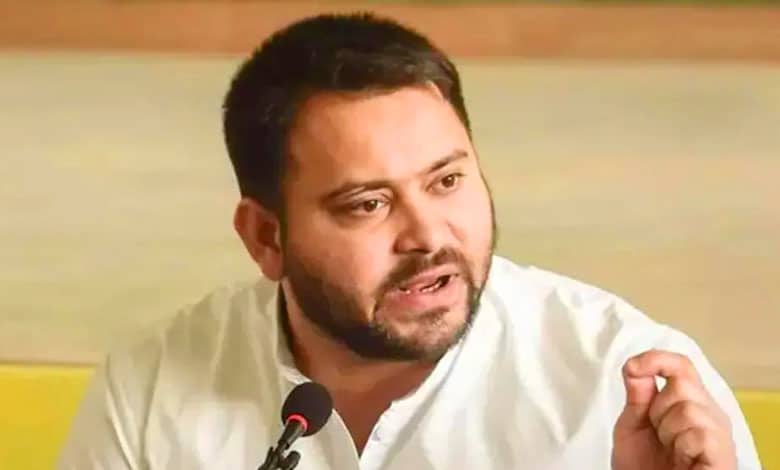New Delhi Railway Station Stampede: Tejashwi Yadav Condemns Tragedy, Slams Central Government
Tejashwi Yadav expresses sorrow over the New Delhi Railway Station stampede, condemns the Central government for negligence, and calls for improved public safety measures.

Patna: Rashtriya Janata Dal (RJD) leader and former Bihar Deputy Chief Minister Tejashwi Yadav expressed deep sorrow over the tragic stampede at New Delhi Railway Station, which resulted in the deaths of 18 people.
He also launched a scathing attack on the BJP-led Central government, accusing it of negligence and mismanagement.
Table of Contents
Tejashwi Yadav Calls Out Central Government’s Failure
Tejashwi Yadav, currently the leader of the opposition in the Bihar Assembly, criticized the government for allegedly attempting to cover up the incident instead of prioritizing public safety.
He claimed that the “double-engine government” (a term often used to describe BJP rule at both state and central levels) was more focused on media optics than on ensuring the safety of passengers.
“The mind is saddened by the untimely deaths caused by chaos and a stampede at New Delhi Railway Station. Despite having so many resources, the government has failed to prevent such tragedies. Instead of ensuring the safety of devotees, the double-engine government is busy with PR stunts and whitewashing these unfortunate incidents,” Tejashwi Yadav stated.
He extended his condolences to the grieving families and prayed for the recovery of those injured, adding:
“In this hour of grief, my sympathies are with the bereaved families. I pray for peace for the departed souls and a speedy recovery for the injured. Om Shanti.”
Stampede at New Delhi Railway Station: What Happened?
The deadly stampede occurred on Saturday night at New Delhi Railway Station, primarily affecting passengers on platforms 12, 13, and 14. According to railway authorities, overcrowding was the primary cause of the tragic incident.
Key Factors Leading to the Stampede:
- A massive rush of passengers waiting to board the Prayagraj Express, which was stationed at platform 14.
- Delayed arrivals of the Swatantrata Senani Express and Bhubaneswar Rajdhani Express, leading to further congestion.
- Poor crowd control measures and lack of proper guidance from railway authorities.
DCP Railway of New Delhi, KPS Malhotra, explained:
“The Prayagraj Express was standing on platform 14, leading to an unusually large crowd. With the late arrival of Swatantrata Senani Express and Bhubaneswar Rajdhani Express, the congestion increased, ultimately resulting in panic and a stampede.”
Casualties and Ongoing Investigation
The tragedy has left at least 18 dead and over a dozen injured, many of whom are receiving treatment at Lok Nayak Jai Prakash (LNJP) Hospital and Lady Hardinge Hospital in Delhi. The death toll could rise as several injured passengers remain in critical condition.
Authorities confirmed that at least three victims were from Bihar, prompting further political scrutiny over safety measures at railway stations. Efforts are currently underway to identify the deceased and provide aid to affected families.
Political Fallout and Criticism
The stampede has triggered a heated political debate, with opposition leaders questioning the Modi-led government’s handling of railway infrastructure and passenger safety.
Tejashwi Yadav’s criticism adds to the growing list of opposition leaders who have demanded accountability. Previously, AIMIM Chief Asaduddin Owaisi also called for a judicially monitored Special Investigation Team (SIT) to probe the incident.
Call for Railway Safety Reforms
The incident has highlighted severe lapses in crowd management at railway stations, raising concerns about safety measures during peak travel periods. Experts and opposition leaders have urged the government to:
- Improve crowd management protocols at major railway stations.
- Implement advanced monitoring systems to regulate passenger flow.
- Increase staff presence to assist and guide travelers during high-traffic hours.
- Conduct an independent investigation into the railway system’s shortcomings.
